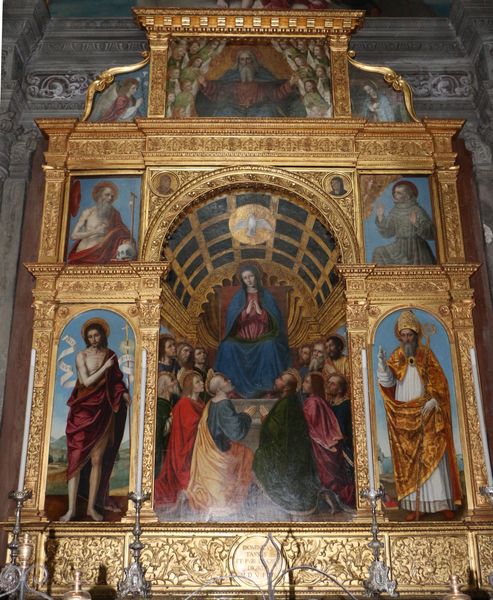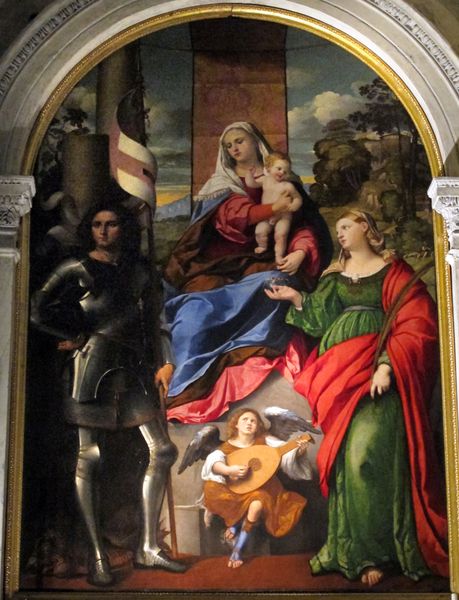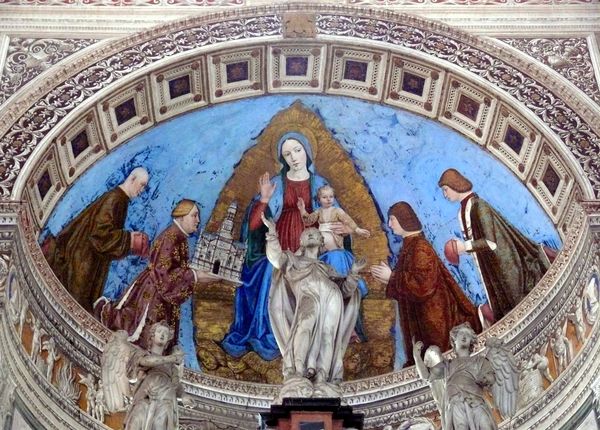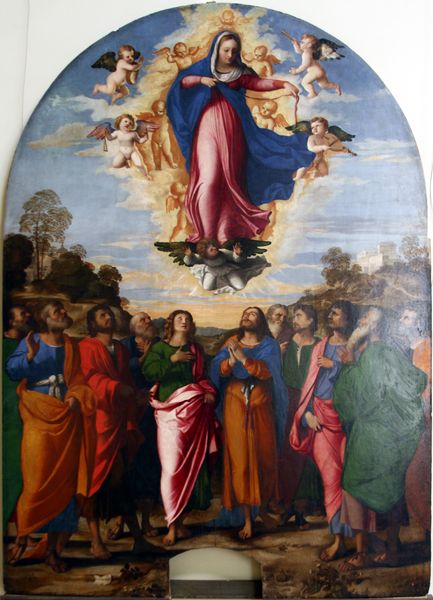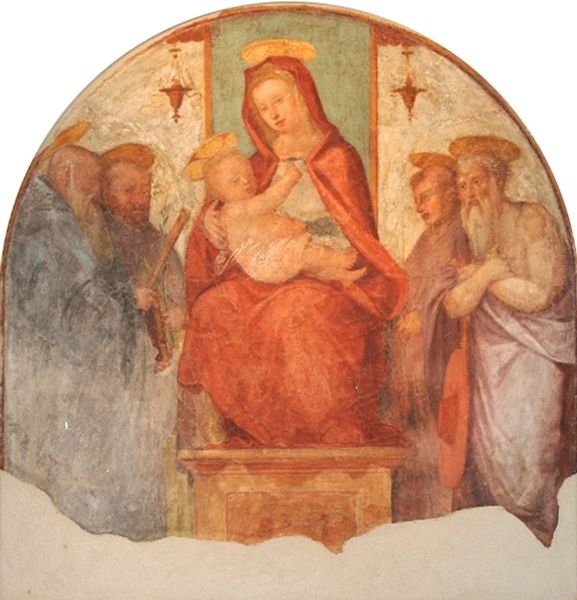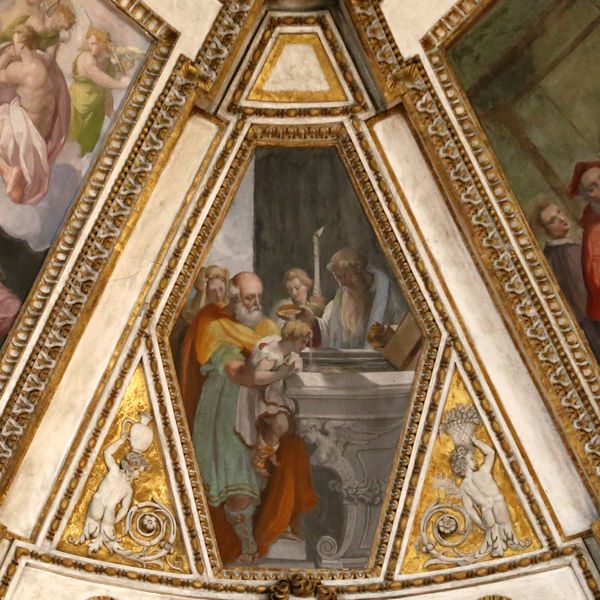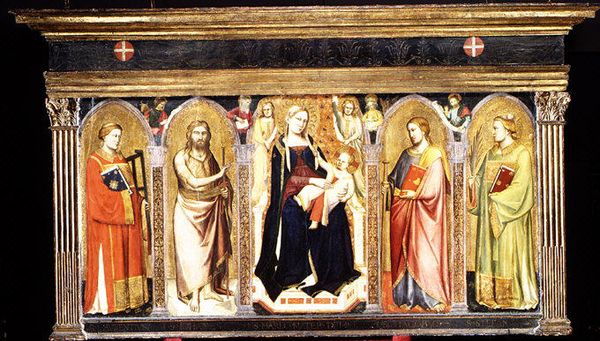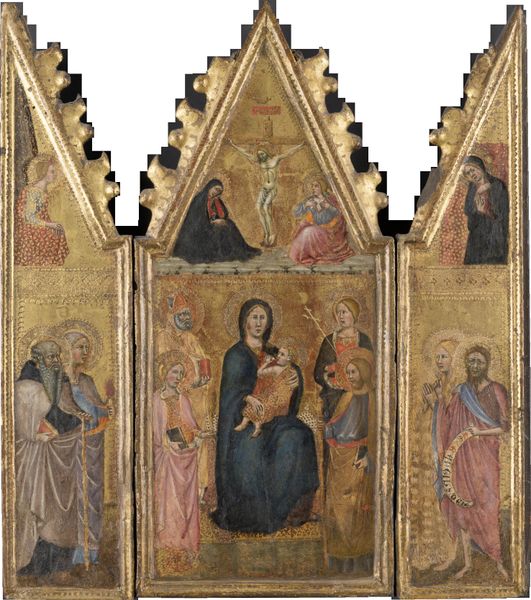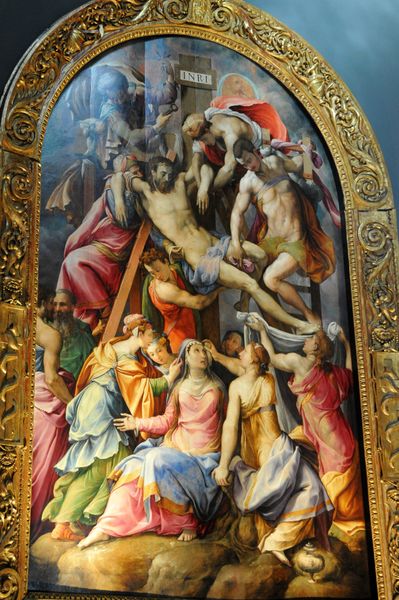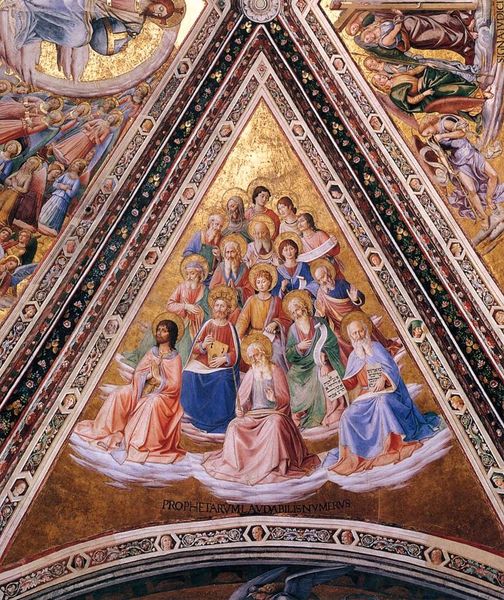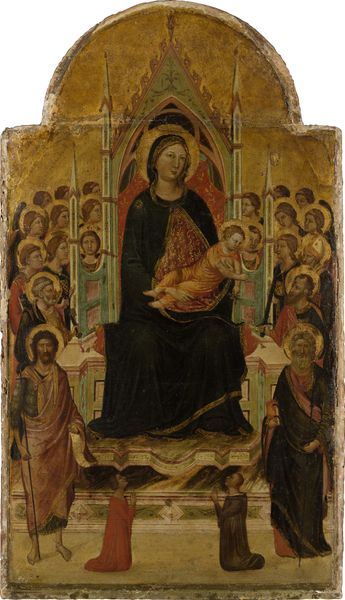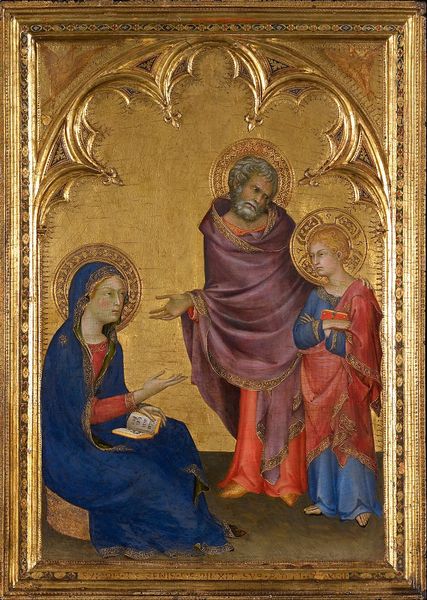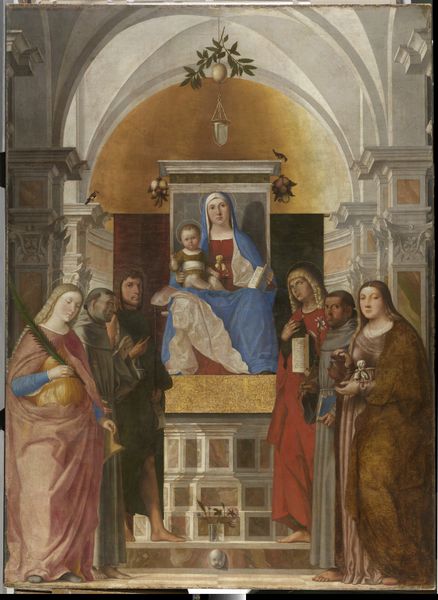
painting, oil-paint
#
painting
#
oil-paint
#
figuration
#
oil painting
#
history-painting
#
italian-renaissance
#
portrait art
Copyright: Public domain
Editor: This is a detail from Ambrogio Bergognone's "Polyptych in Santo Spirito," created in 1507 using oil paint. It’s… very gold. What stands out to me is the assembly of figures and the almost theatrical way they’re presented. What do you see in this piece, particularly when considering its historical context? Curator: The excessive use of gold leaf, in a moment when color and realism were emerging, makes me ask a series of questions about patronage. What social power structures are at play that someone commissioned and paid for something like this? More broadly, I consider the Madonna figure: who gets to represent the sacred feminine? And what does it mean that this image continues to resonate today? Editor: Those are interesting points. So, are you suggesting we look beyond the purely religious aspect and delve into issues of class and gender dynamics of the time? Curator: Precisely. Art doesn't exist in a vacuum. Think about who controlled the narrative then – powerful families, the Church – and how their wealth shaped the art we see. Think about who was allowed to be an artist or be depicted. It prompts us to examine how power continues to influence art production and consumption even now. What narratives are valued, and whose voices are marginalized? Editor: That definitely gives me a lot to think about. I never really considered those aspects of it before. Thanks! Curator: Of course. Analyzing the convergence of aesthetics, money and representation is so critical to understanding historical and contemporary culture.
Comments
No comments
Be the first to comment and join the conversation on the ultimate creative platform.
